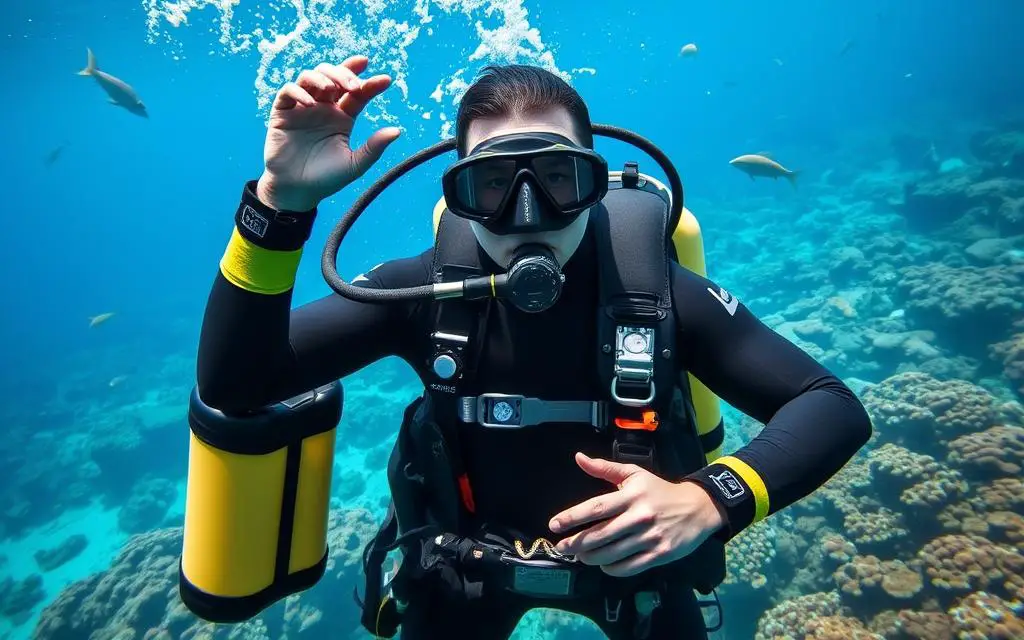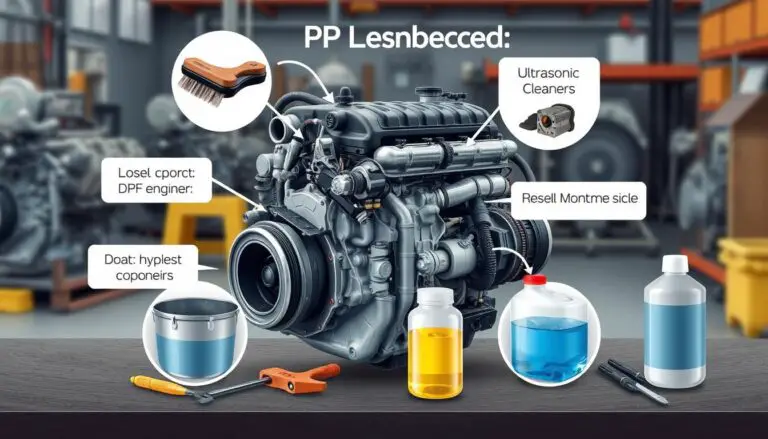How to become a Rescue Diver: Essential Steps & Training
To become a rescue diver, you need more than just basic scuba skills. This guide will show you the key steps and training. You’ll learn how to handle emergencies while diving.
Key Takeaways
- Rescue diver certification involves advanced training in emergency response and dive injury management.
- Prerequisites include experience as an open water diver and completion of additional certification courses.
- The rescue diver training program teaches techniques for recognizing, preventing, and managing dive-related emergencies.
- Becoming a rescue diver requires a commitment to ongoing training and skill development.
- Qualified rescue divers play a vital role in ensuring dive teams’ and recreational divers’ safety and well-being.
Understanding the Role of a Rescue Diver
Rescue divers are key to keeping our fellow divers safe. We don’t just dive for fun; we’re trained for emergencies. We act fast and know how to handle many situations, both on and under the water.
Emergency Response and Underwater Operations
When trouble hits, we’re the ones who jump into action. We spot distress signs, figure out what’s happening, and help right away. This might mean doing CPR, giving oxygen, or doing tricky rescues to get someone to safety.
Rescues underwater are a big job that requires special skills. We search for lost divers, find injured ones, and safely return them to the surface. Knowing a lot about diving and emergency care is vital for us.
Dive Injury Management and Prevention
Rescue divers also help manage and prevent dive injuries and sickness. We know how to spot and treat problems like decompression sickness and oxygen poisoning. We teach others how to stay safe while diving.
We work to prevent problems by teaching about safe diving practices. This includes planning dives well, keeping gear in good shape, and following safety rules.
“As rescue divers, we are the guardians of the underwater realm, ready to spring into action at a moment’s notice to protect our fellow adventurers.”
Prerequisites for Rescue Diver Certification
To become a certified rescue diver, you need to meet certain requirements. These are set by top dive training groups. You must show you’re good at open water diving, fit, and know the basics of diving.
Experience and Skill Requirements
The requirements for rescue diver certification are:
- At least 20 dives to show you’re skilled in basic diving
- You must be an Advanced Open Water Diver or have an equivalent
- You need to know how to handle emergencies, like first aid and CPR
- You must be able to do emergency ascents and find and rescue divers
- You should understand dive theory, like how the body works underwater and planning dives
Dive centers offer rescue diver training to help you meet these needs. These programs teach you both the theory and practice of emergency diving. You’ll learn how to deal with tough situations, from scuba rescue diver tasks to response diving emergencies.
| Certification | Prerequisites | Training Focus |
|---|---|---|
| Rescue Diver Certification | – Minimum 20 open water dives – Advanced Open Water Diver certification – Emergency response skills (first aid, CPR, oxygen) |
– Dive emergency management – Diver rescue techniques – Underwater search and recovery |
By meeting these strict requirements, you can get your rescue diver certification. This lets you join a group of skilled people ready to help in emergencies and assist other divers.
how to become a rescue diver
Becoming a rescue diver is a rewarding step for scuba diving lovers. It teaches you to handle emergencies and help others in trouble. Here’s how to get your rescue diver certification.
Prerequisite Training and Experience
You need a strong scuba diving background to start. You should be an Advanced Open Water Diver or have a similar experience. Also, you need at least 40 dives logged. This prepares you for more challenging situations.
Rescue Diver Certification Course
The course teaches you how to respond to emergencies and rescue divers. It includes:
- Theory on diver psychology, accident prevention, and emergency management
- Practical training in rescue scenarios, including first aid
- Open-water dives to practice in real situations
After finishing the course, you get the Rescue Diver certification. It’s recognized worldwide.
Ongoing Training and Maintenance
Keeping your rescue skills sharp is key. Practice often, stay updated with new methods, and consider advanced courses. This keeps you ready for emergencies.
Starting your rescue diver journey is rewarding and important. It boosts your diving skills and helps keep the diving community safe.
| Rescue Diver Certification Criteria | Requirements |
|---|---|
| Minimum Age | 15 years old |
| Prerequisites |
|
| Training Components |
|
| Certification | Rescue Diver certification recognized by leading scuba diving organizations |
“Becoming a rescue diver is a profound responsibility that requires dedication, training, and a deep commitment to the safety of fellow divers. It’s a journey that will transform your diving experience and empower you to make a real difference in the underwater world.”
Conclusion
Becoming a rescue diver is a rewarding step for those who want to improve their skills and help keep dives safe. You’ll learn how to handle emergencies, give critical care, and protect your fellow divers. This guide will prepare you for these important tasks.
The path to becoming a rescue diver takes dedication and a love for learning. But the benefits are huge. You’ll know how to deal with many diving emergencies and join a community that values safety and responsibility.
If you’re an experienced diver or just starting, becoming a rescue diver is a great choice. It’s a way to grow personally and help keep the diving community safe. Take on the challenge, start your training, and become a skilled rescue diver. You’ll be ready to help your fellow divers in the underwater world.
FAQ
1- What is the role of a rescue diver?
Rescue divers respond to emergencies and perform complex underwater rescues. They are trained to handle dive-related injuries and illnesses. This includes managing issues like decompression sickness and oxygen toxicity.
2- What are the prerequisites for becoming a rescue diver?
To become a certified rescue diver, you need to meet certain requirements. You must have open water diving experience and be physically fit. You also need to show you can perform essential diving techniques.
3- What does the rescue diver training course cover?
The course teaches emergency response and rescue techniques. It covers topics like emergency management and underwater search and recovery. It also includes dive injury prevention and managing diver stress during emergencies.
4- How do I obtain my rescue diver certification?
To get your certification, you need to complete a specialized training course. This course includes classroom sessions, confined water training, and open water exercises. It prepares you for emergencies.
5- What are the benefits of becoming a rescue diver?
Becoming a rescue diver is rewarding and important for experienced divers. It enhances your skills and helps keep the diving community safe. You’ll learn specialized techniques and emergency response protocols.







